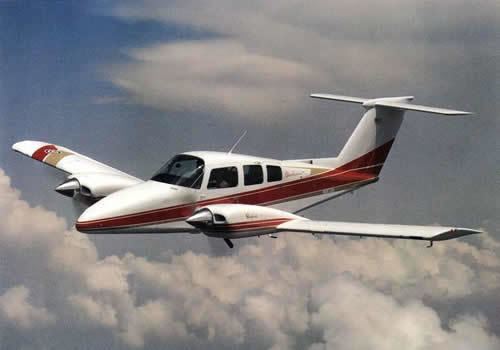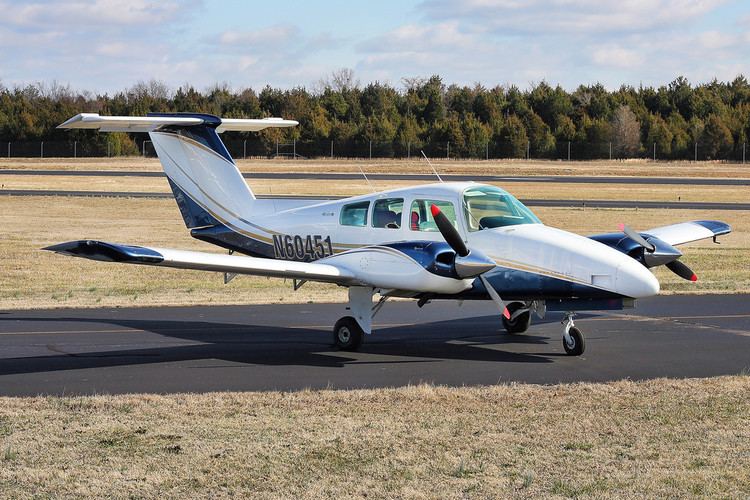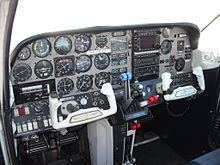Cruise speed 293 km/h Range 1,445 km Weight 1,116 kg | Top speed 317 km/h Wingspan 12 m Length 8.8 m | |
 | ||
Beechcraft duchess taking the be 76 up with my friend
The Beechcraft Model 76 Duchess is an American twin-engined monoplane built by Beechcraft.
Contents
- Beechcraft duchess taking the be 76 up with my friend
- Pre flight inspection beechcraft duchess 76
- Design and development
- T tail
- Specifications
- References
The Duchess is a cantilever low-wing monoplane with an all-metal structure, four seats, retractable tricycle undercarriage and a T-tail. It is powered by one 180 hp (134 kW) Lycoming O-360-A1G6D on the left wing and one LO-360-A1G6D on the right wing, which drive counter-rotating, constant-speed two-bladed propellers.

Pre flight inspection beechcraft duchess 76
Design and development
The Duchess was developed by Beechcraft from the single-engined Beechcraft Musketeer.

The prototype was first flown in September 1974 with the first production version flown on 24 May 1977. Deliveries to the Beech Aero Centers commenced early in 1978.

The Model 76 was designed as an economical twin-engine trainer for the Beech Aero Centers and to compete with the very similar Piper PA-44 Seminole as well as the Cessna 310.

The Model 76 incorporates engines that turn in different directions to eliminate the critical engine from single engine operation.
The Duchess wing is of honeycomb construction fastened by bonding, rather than rivets, to reduce cost and produce a smoother aerodynamic surface.
The Duchess is no longer in production but large numbers remain in use in flight schools around the world.
T-tail
The use of a T-tail on the Model 76 met with mixed critical reception when the aircraft was introduced. Plane & Pilot pronounced: "Outstanding design characteristics of the new Duchess include an aerodynamically advantageous T-tail, which places the horizontal surfaces above the propeller slipstream for better stability and handling.", while Gerald Foster said: "[Beechcraft's] interest in T-tails was perhaps an affectation triggered by their wide use on jet airliners".
Specifications
Data from Jane's All The World's Aircraft 1980–81 and 1978 Beechcraft Duchess Pilot Operating Handbook
General characteristics
Performance
